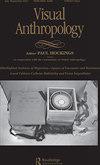(In)visibility, Mediated, and Sporting Perceptions: Bollywood, Biopics, and the Epistemic Turn in Mary Kom
IF 0.3
Q3 ANTHROPOLOGY
引用次数: 0
Abstract
In recent years several Hindi films have been produced that delineate the difficulties and challenges faced by Indian athletes and boxers, and highlight their sociocultural struggles in asserting their pursuit of and passion for their sport. Mary Kom (2014) is one such Hindi-language biographical sports film based on the life of the eponymous boxer Mary Kom, a film that brings to the foreground the ingrained social prejudices, gender biases and marginalization that affect the personal lives of sportswomen and play decisive roles in shaping their career trajectories. Here we contend that biopics like Mary Kom are immensely significant in delinking the dominant epistemologies, ideologies and interpretations, undermining the controlling vision and visibility, and broadening the horizons of understanding through visual representations. Biopics on sportswomen, in uncovering stories of their astounding achievements, generate alternative epistemologies and disentangle the epistemologies of sportswomen from the exclusive epistemic domain of men. The article examines Mary Kom from the standpoint of “aesthetic epistemology,” a way of producing knowledge in which visualizations are intended to convey something invisible to the spectator and heighten their epistemic awareness. Finally, the article argues that biopics like Mary Kom emphasize plural modes of knowing and recognizing the hegemonized epistemologies and ontologies of Indian sportswomen, and thereby interrogate the logocentrism of power and the governmentality of male-centered Hindi sports films.(In)可见性、中介和体育感知:宝莱坞、生物物理学和玛丽·科姆的认识论转向
近年来,制作了几部印地语电影,描述了印度运动员和拳击手面临的困难和挑战,并强调了他们在追求和热爱自己的运动时所进行的社会文化斗争。《玛丽·科姆》(2014)是一部以同名拳击手玛丽·科姆的生活为原型的印地语传记体育电影,这部电影将根深蒂固的社会偏见、性别偏见和边缘化带到了前台,这些偏见、性别偏误和边缘化影响了女运动员的个人生活,并在塑造她们的职业轨迹中发挥了决定性作用。在这里,我们认为,像玛丽·科姆这样的传记片在使占主导地位的认识论、意识形态和解释脱钩、破坏控制性的视觉和可见性以及通过视觉表征拓宽理解视野方面具有极其重要的意义。关于女运动员的生物物理学,在揭示她们惊人成就的故事时,产生了替代的认识论,并将女运动员的认识论与男性的专属认识论领域区分开来。文章从“审美认识论”的角度审视了玛丽·科姆,这是一种产生知识的方式,在这种方式中,视觉化旨在传达观众看不见的东西,并提高他们的认识意识。最后,文章认为,像《玛丽·科姆》这样的传记片强调了对印度女运动员霸权的认识论和本体论的多元认识和认可,从而质疑了以男性为中心的印地语体育电影的权力话语中心主义和治理心态。
本文章由计算机程序翻译,如有差异,请以英文原文为准。
求助全文
约1分钟内获得全文
求助全文
来源期刊

Visual Anthropology
ANTHROPOLOGY-
CiteScore
1.00
自引率
50.00%
发文量
19
期刊介绍:
Visual Anthropology is a scholarly journal presenting original articles, commentary, discussions, film reviews, and book reviews on anthropological and ethnographic topics. The journal focuses on the study of human behavior through visual means. Experts in the field also examine visual symbolic forms from a cultural-historical framework and provide a cross-cultural study of art and artifacts. Visual Anthropology also promotes the study, use, and production of anthropological and ethnographic films, videos, and photographs for research and teaching.
 求助内容:
求助内容: 应助结果提醒方式:
应助结果提醒方式:


